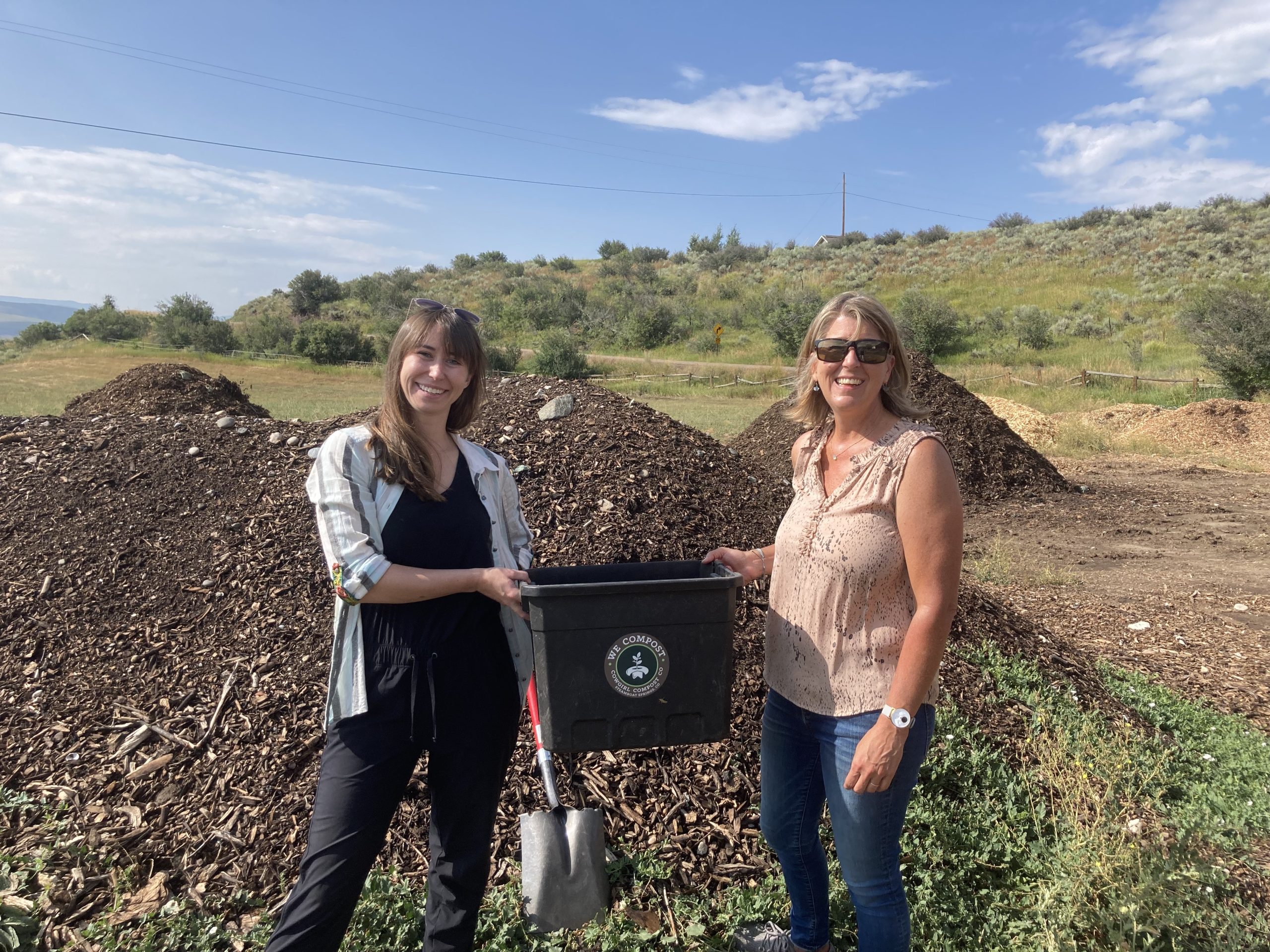AUGUST 2, 2019 BY
From the Steamboat Pilot & Today | August 2, 2019
Hayden station to retire completely by 2036
Plumes of water vapor rise from Hayden Station in 2017.
Matt Stensland
STEAMBOAT SPRINGS — For nearly as long as settlers have lived in the Yampa Valley, they’ve been mining coal. In the 1960s and 1970s, the coal-fired power plants followed, with the first unit of Hayden Station in place in 1965 and the first units of Craig Station built downstream in 1974.
Within the next 20 years, Hayden Station will close. Within six years, a third of Craig Station will close.
According to Xcel Energy’s 2016 Electric Resource Plan filed with the Colorado Public Utilities Commission, a regulatory filing required by the state, that without “significant new investment or maintenance expense,” the company estimates Hayden Station will retire completely in 2036.
Unit 1, the smaller and older of the two units at the power plant, is slated for closure in 2030. Completed in 1965, Unit 1 generates 179 megawatts of power.
Unit 2, built in 1976, is slated for closure in 2036. It generates up to 262 megawatts.
“The facility is going to keep operating in full or in part through 2036,” Xcel spokesperson Mark Stutz said. “That has always generally been the plan. We’re going to be a part of the community for a decade-plus moving forward.”
For Yampa Valley communities, that means that the next 20 years will bring significant change as tax revenues, jobs and community identities shift.
Stutz emphasized that Xcel has spent millions upgrading equipment that reduced its emissions in the last decade, and the company plans to continue to put that investment to use.
Hayden Town Manager Mathew Mendisco said that’s given the community a longer timeline to prepare for the closure.
“Because of that, we have these dates that are a lot farther out than you see (in other communities),” Mendisco said. Community leaders in Hayden and in Routt County have been attending conferences with other coal-reliant communities in the region and nation. Mendisco said all the other communities in these meetings are faced with unit closures within the next four years.
“We’re not facing that currently,” he said. “We have time to plan, and that’s the process of what we’re starting. We support Xcel, and we support our workers here 100%, but as the council pointed out to me, we’re not going to ignore the current trends that are happening.”
He said it must be addressed at a regional level — Hayden doesn’t have the capacity to take it on its own. That includes economic development work supported by Xcel.
Earlier this year, Xcel announced that it planned to provide 100% carbon-neutral energy by 2050 and reduce its carbon emissions by 80% by 2030. In light of that fact, Mendisco said “we’re not going to bury our heads in the sand.”
Just west on U.S. Highway 40, Craig Station’s Unit 1 is set to retire in 2025. Xcel is a minority owner of units 1 and 2 at Craig Station, and according to Xcel’s Electric Resource Plan, it estimates retirement of Unit 2 in 2039.
“It’s really important for all of us to recognize that we all need to be in this together,” said Routt County Commissioner Beth Melton. “For those who live in Steamboat, we can’t just say ‘Oh well this is happening in Hayden.’ We have to recognize how critical this is to the economy valleywide, and that’s not just Routt County. It’s also Moffat County. It’s not just Hayden. It’s also Steamboat, and it’s also South Routt, and we have to have a mentality of collaboration around addressing these challenges.”
While Xcel operates the plant, it’s one of three companies that own the plant: Xcel, PacifiCorp and the Salt River Project. Stutz wrote in an email to Steamboat Pilot & Today that if these dates were to change, all owners would have to agree to it and file new documents with the Colorado Public Utilities Commission.
“Nothing new has been filed since 2016, and we don’t anticipate anything new,” Stutz wrote.
Looking to the future
Through Xcel and PacifiCorps’s shares of Hayden Station, Twentymile Mine and the Union Pacific trains that haul coal to the power plant, the coal industry made up four of the county’s top five taxpayers in 2018, according to Melton. Xcel is the county’s largest taxpayer, she said, though even in that position Xcel’s contributions represent only about 4.7% of the county’s total assessed value.
There’s no silver bullet here. It’s kind of golden buckshot, I suppose, that’s doing a lot of different things”
JOHN BRISTOL, ROUTT COUNTY ECONOMIC DEVELOPMENT DIRECTOR
In West and South Routt County, the impact is even more direct on the special districts that fund schools, libraries and cemeteries. Twentymile Mine drives budgets for these districts in South Routt, while Hayden Station does the same in West Routt.
Mendisco said about 60% of the revenue that supports the West Routt Fire Protection District, Hayden School District, Hayden Cemetery District and The Solandt Memorial Hospital District comes from Hayden Station.
But the coal industry isn’t just dollar signs for the Yampa Valley. Community leaders are concerned for the people, too.
Generations of Yampa Valley residents have dug and burned coal, and city and county Economic Development Director John Bristol said those are good jobs at the plant, which provide families with salaries, health insurance and retirement benefits. The money in those salaries also gets circulated to local businesses, pays mortgages and, through purchases, makes its way into other local pockets.
“It impacts the culture and the community spirit,” Bristol said, adding that the power plant is a part of who people are.
“How do we continue to support that and support the families that are employed there? It’s a big issue for us as a community, and when I say ‘us as a community,’ I mean the entire valley,” he continued. “We can’t draw a line around the economy.”
As of July, Hayden Station employs 64 people, Stutz wrote. As the plant moves closer and closer to retirement, Stutz said the company will rely on attrition as employees retire or move on to new jobs of their own accord.
Those who remain in 2030 and 2036 will be allowed to transfer to other jobs within Xcel or might undergo training to operate solar or wind farms. In cases of closure, Stutz said, employees are given “plenty of notice,” years in advance of the plant’s retirement.
In 2013, Xcel shuttered Arapahoe Generating Station in Denver and announced last year that it planned to close two of Pueblo’s Comanche Power Station’s three units 10 years ahead of schedule in 2022 and 2025.
“We have used a combination of natural attrition — employees retire during that period or choose to retire by the final date — we’re able to relocate them to other facilities,” Stutz said. “There are other facilities, whether natural gas or coal, that they can work at, or sometimes, they will go through retraining. In all but a handful of cases, in the several plants we’ve shut down in the last couple years, the employees have found some other career path that met their approval. I don’t think we’ve had but a handful that have not been able to find anything by the time of the plant closure.”
Melton said that means having local jobs available for those who might not want to leave the valley as coal jobs decrease. Melton said, for some, it might be a better choice to leave than to stay in the valley.
“Or maybe they do want to stay here, and we want to make sure all those options are available to them,” Melton said. “As for community resiliency, we want to make sure we have a diverse base of businesses. We don’t want to be overly reliant on any single industry, whether it’s energy or another industry.”
Mendisco said government can’t create jobs, but it can set the stage on housing and business issues to encourage the private sector to step up to that plate.
Attracting and keeping businesses in the county can help achieve multiple goals, both in providing jobs and diversifying tax revenues in the county. Mendisco said Hayden is focused on growth, in building out the town under existing land use platform, but particularly in boosting commercial growth in the West Routt special districts.
Under Colorado’s Gallagher Amendment, commercial property assessments are about three times higher in value than residential property assessments. This means that to fill an eventual vacancy from the commercial assessments from the power plant, both Mendisco and Melton said the community must expand businesses in Hayden.
Hayden’s new school facilities, improved broadband access, technical and financial support from the state in creating strategic plans and steps to support small businesses will also benefit the community as it transitions, Bristol said.
“There’s no silver bullet here,” Bristol said. “It’s kind of golden buckshot, I suppose, that’s doing a lot of different things. In Hayden, it’s downtown beautification. It’s working to attract small business and being willing to support them with small incentives to get them up and going. It’s ensuring that you’ve got a really good school system and good school facilities. … It’s getting those pieces lined up and moving forward, so when there is more opportunity, you’re able to move on them.”
One piece of this “golden buckshot” is a comprehensive planning effort the town of Hayden is launching later this year. This plan will include an economic development master plan, Mendisco said. It’ll examine how much property tax revenue would be generated by buildout of available lots within town limits. It will also contribute to the community’s understanding of how Hayden Station’s closure and other shifts in the area’s coal industry will actually impact the valley.
Though the town is leading the effort, Mendisco said Xcel has expressed interest in helping fund development of the plan, and the county, city of Steamboat Springs, Steamboat Springs Chamber and Hayden School District have submitted letters of support for the plan as the town has pursued grants.
He said this plan will help Hayden navigate its role within the future of Northwest Colorado.
“Hayden will play its part,” he said. “We’ve just got to know how to play our part the right way.”
To reach Eleanor Hasenbeck, call 970-871-4210, email ehasenbeck@SteamboatPilot.comor follow her on Twitter @elHasenbeck.






